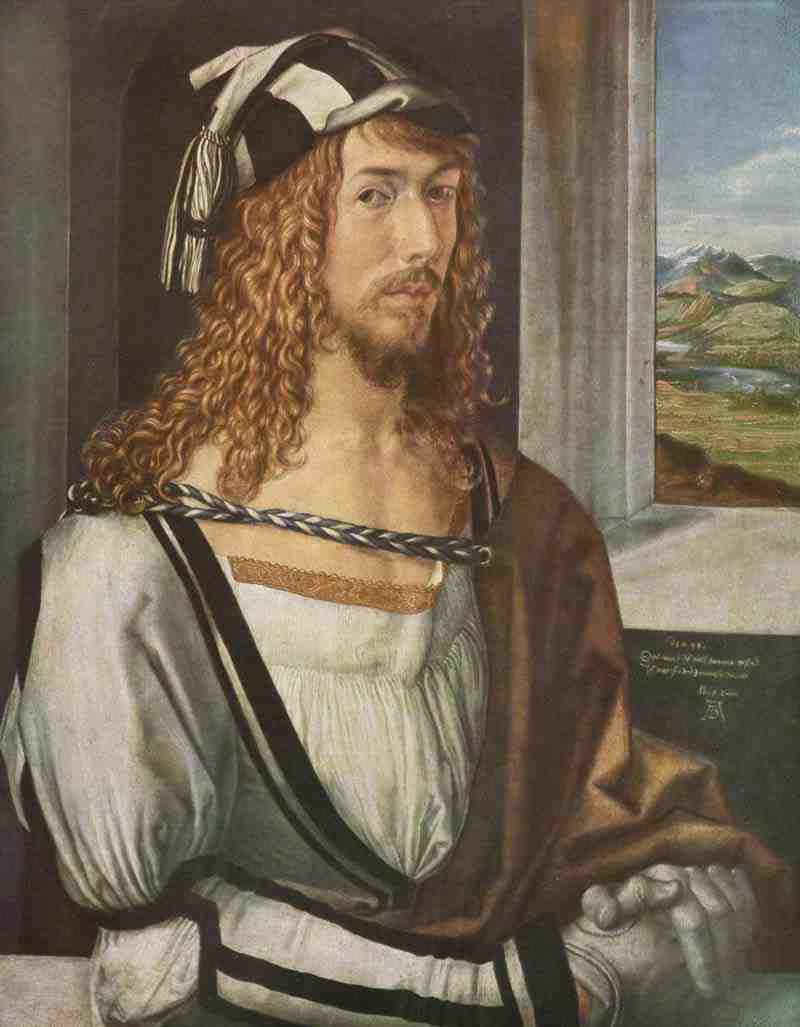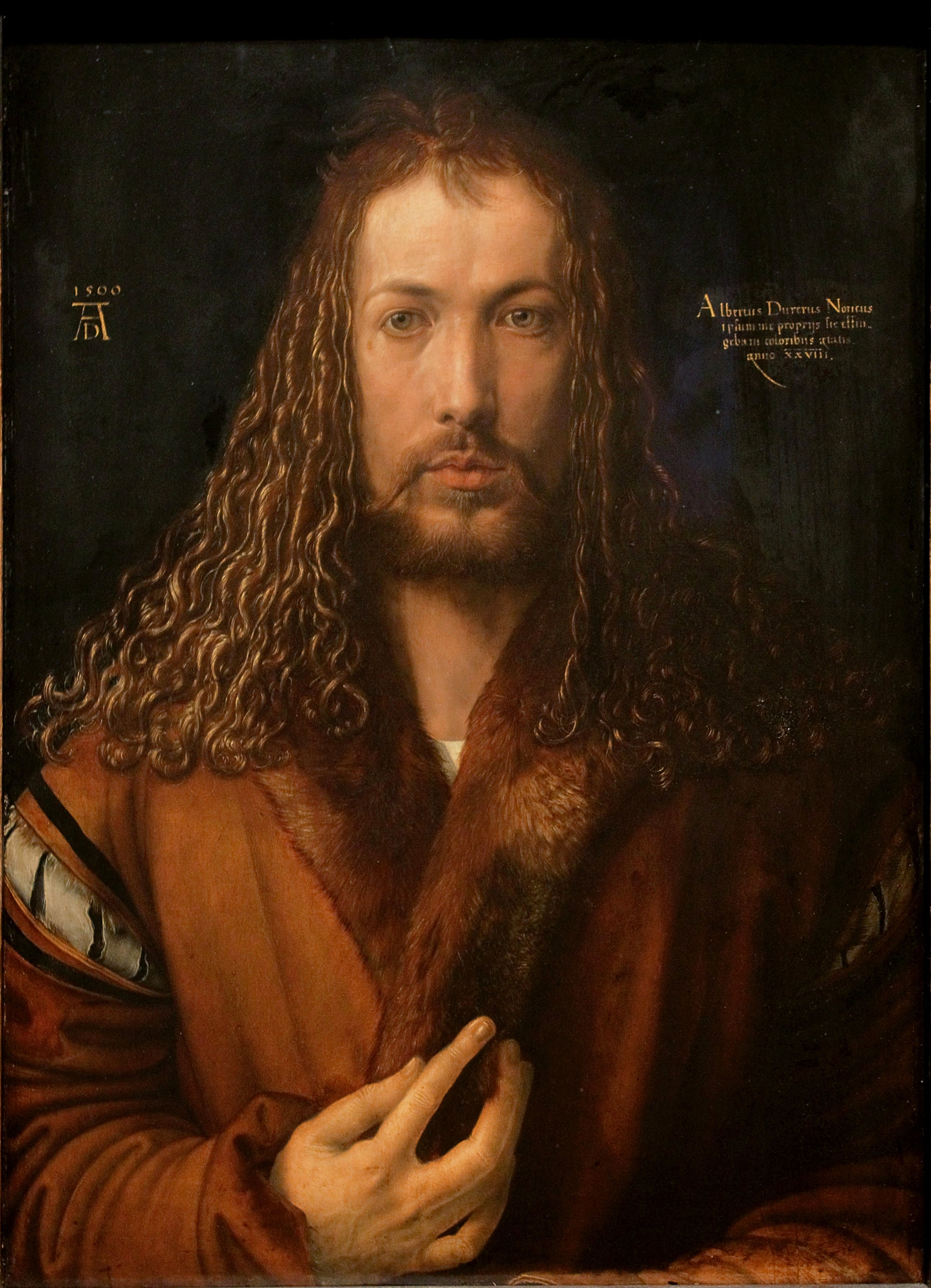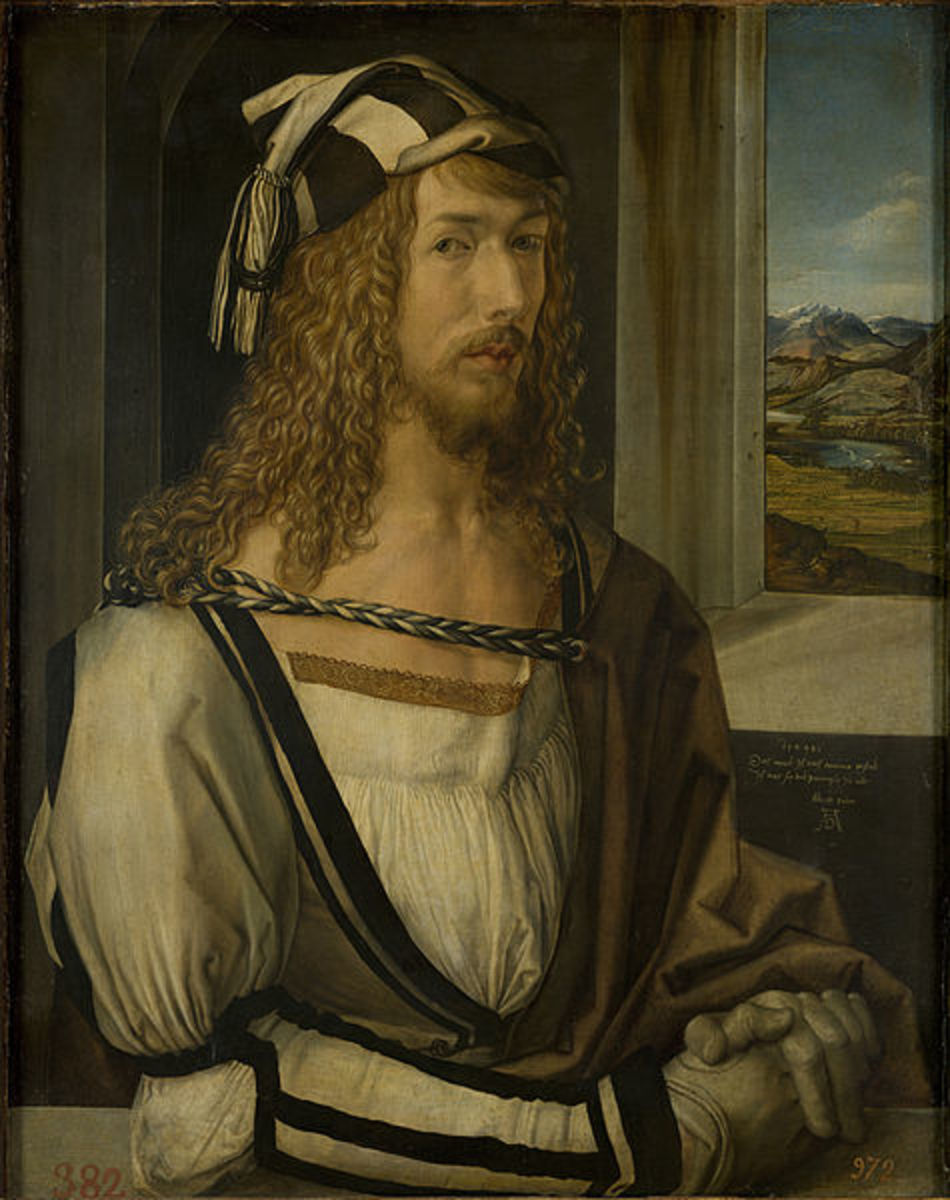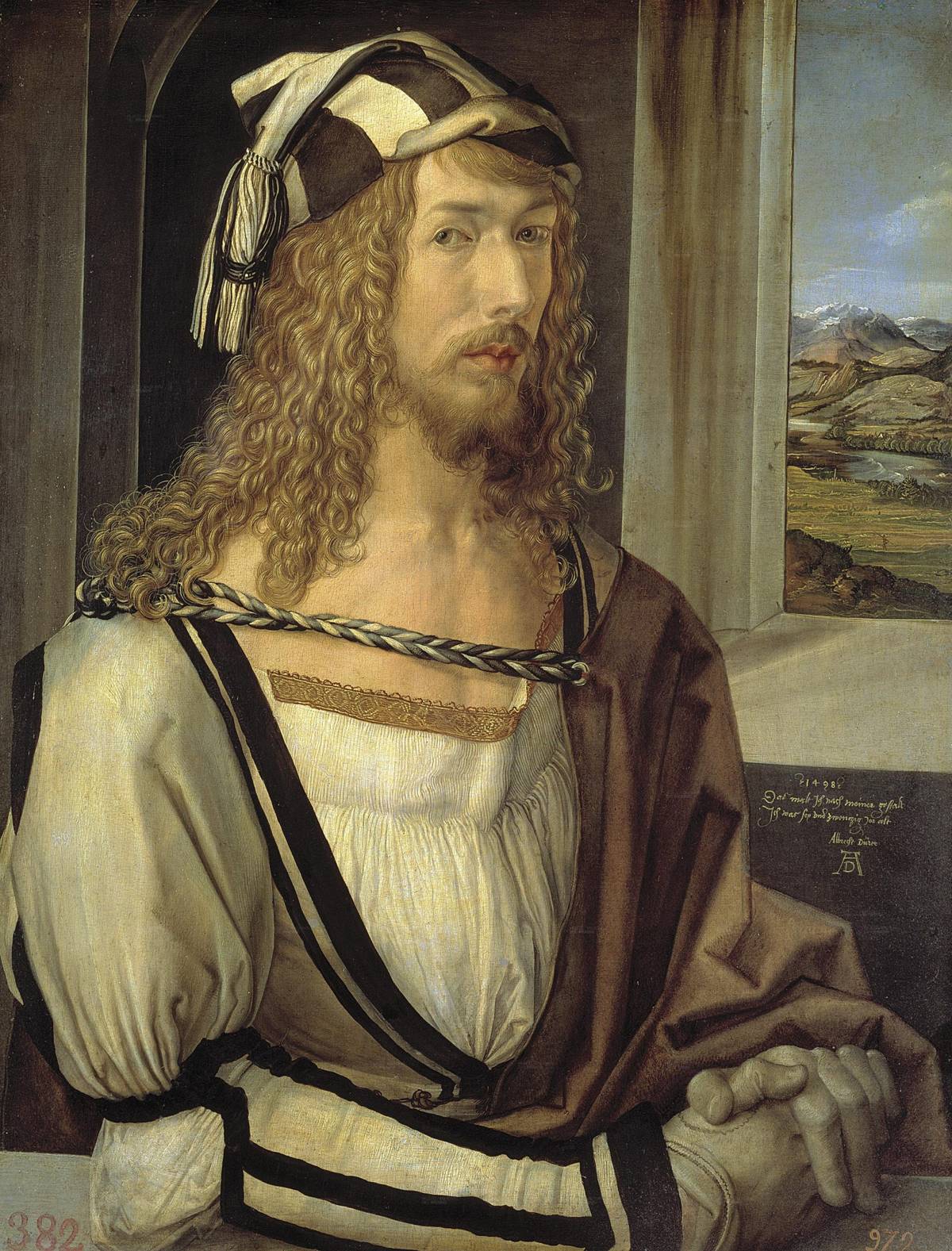
SelfPortrait. Albrecht Dürer
Dürer's self-portrait at 28 (1500). Alte Pinakothek, Munich. Dürer's vast body of work includes engravings, his preferred technique in his later prints, altarpieces, portraits and self-portraits, watercolours and books. The woodcuts series are more Gothic than the rest of his work.

Dürer, SelfPortrait Albrecht Dürer (14711528), SelfPortrait in a Furcollared Robe, 1500, oil
Albrecht Durer Date: 1500 Style: Northern Renaissance Genre: self-portrait Media: oil, panel Location: Alte Pinakothek, Munich, Germany Dimensions: 67.1 x 48.9 cm Order Oil Painting reproduction Article Wikipedia article References The genre of self-portraiture fully developed in Western painting during the Renaissance.

The Genius of Albrecht Dürer Revealed in Four SelfPortraits Open Culture
Albrecht Dürer (born May 21, 1471, Imperial Free City of Nürnberg [Germany]—died April 6, 1528, Nürnberg) painter and printmaker generally regarded as the greatest German Renaissance artist. His vast body of work includes altarpieces and religious works, numerous portraits and self-portraits, and copper engravings.

SelfPortrait Durero, Alberto durero, Autorretratos
The most famous of Dürer's self-portraits is the c. 1500 CE oil on wood panel painting, now on display in the Alte Pinakothek in Munich. Aged 28, the artist is wearing a fur-trim coat and long curly hair.. Written by Heinrich Wolfflin & Albrecht Durer & Stanley Applebaum & Alfred Werner, published by Dover Publications (1970) $17.95.

Albrecht Dürer, Autoritratto all'età di 13 anni, punta d'argento su carta, 27,5 × 19,6 cm Arte
Albrecht Dürer's 1484 self-portrait. Albertina, Vienna, 27.5 x 19.6 cm Self-Portrait at the age of 13 (the title is modern) is a silverpoint drawing by Albrecht Dürer, dated 1484, when the artist was either twelve or thirteen years of age.

Selfportrait at age 28 by Albrecht Dürer Obelisk Art History
Self Portrait (1493), also known as Portrait of the Artist Holding a Thistle, is an oil-on-vellum painting that was created by Albrecht Dürer. The painting, executed when Dürer was twenty-two, is one of a series of self-portraits and captures the German artist at the time of his engagement to Agnes Frey.

FileSelfportrait at 13 by Albrecht Dürer.jpg Wikimedia Commons
They reveal an increasingly successful and self-assured master, eager to assert his creative genius and inherent nobility, while still marked by a clear-eyed, often foreboding outlook. They provide us with the cumulative portrait of an extraordinary Northern European artist whose epitaph proclaimed: "Whatever was mortal in Albrecht Dürer.

Albrecht Durer, a master Northern Renaissance artist hubpages
At the beginning of video Dr. Zucker said that portrait painted in 1498 is first Durer's self-portrait. Somebody correct me if I'm wrong but isn't first one self-portrait the one in 1493 Portrait of the Artist Holding a Thistle..?. Two years after Durer finished his first painted self-portrait, he produced another in the year 1500. We're.

FileDürer self portrait 28.jpg Wikimedia Commons
A self-portrait by the German Renaissance artist Albrecht Dürer (1471-1528 CE). c. 1500 CE (Alte Pinakothek, Munuch) Remove Ads Advertisement License & Copyright Based on Wikipedia content that has been reviewed, edited, and republished. Original image by Albrecht Durer. Uploaded by Mark Cartwright, published on 12 October 2020.

Albrecht Dürer's " SelfPortrait at 28 " from the year 1500, also... Download Scientific Diagram
Dürer, Self-portrait (1498) Watch on Durer was a printmaker, painter, and theoretician born in Nuremberg and gained lifetime fame through his prints.

Albrecht Dürer (1471 1528)
Self-portrait (or Self-portrait at 26) is the second of Albrecht Dürer 's three painted self-portraits. In this work, executed in oil on wood panel in 1498, Dürer haughtily elevates himself to the social position he believed suited to an artist of his ability. Dürer depicts himself indoors under an arch, in half length, turning towards the viewer.

Albrecht Dürer a fanatical perfectionist in his work who produced some of the greatest
Dürer was the first artist to paint self-portraits. But why would he paint in the typical medieval tradition of picturing Jesus in full frontal view and use himself as the visage of Christ? The answer is: we don't know!

SelfPortrait Albrecht Durer 1498 Poster Canvas Print Wooden Hanging Scroll Frame Royal
The Christ-like self-portrait above was painted in 1500, shortly before Dürer's 29th birthday. The painting was made in oil on a wooden panel, and is now in the collection of the Alte Pinakothek in Munich. Unlike his earlier self-portraits, which were composed in the customary three-quarters view, Dürer's self-portrait of 1500.

Albretch Dürer Selfportrait (1498) r/museum
Source Wikimedia Commons. Albrecht Dürer was 28 when he painted his self-portrait. The inscription in the top-right of the painting tells us so: " I, Albrecht Dürer of Nuremberg have portrayed.

Autoportrait Albrecht Dürer, 1500 Albrecht durer, Albrecht dürer, Self portrait
Albrecht Dürer, Self-Portrait (1500) by Dr. Steven Zucker and Dr. Beth Harris Albrecht Dürer, Self-portrait, 1500, 67.1 x 48.9cm (Alte Pinakothek, Munich) More Smarthistory images…

Albrecht Durer Self Portrait [detail] Albrecht durer, Portrait, Portrait art
Three self-portraits by Albrecht Dürer It is difficult to know what an artist's intentions were when they created their works. Most of the time, artists do not leave the public with a written statement of what their work intended. It is then left onto art historians and art critics to solve the mystery.